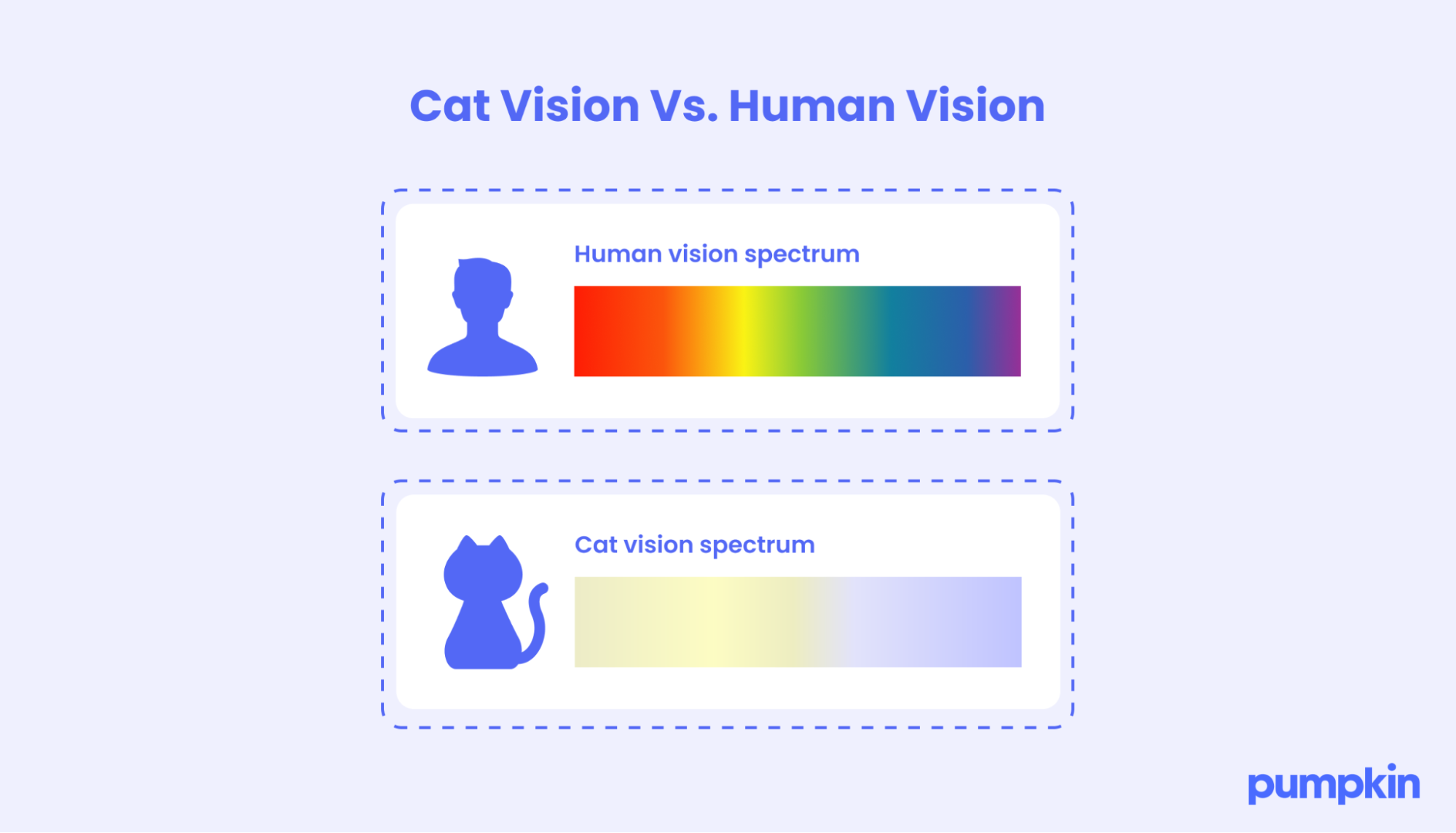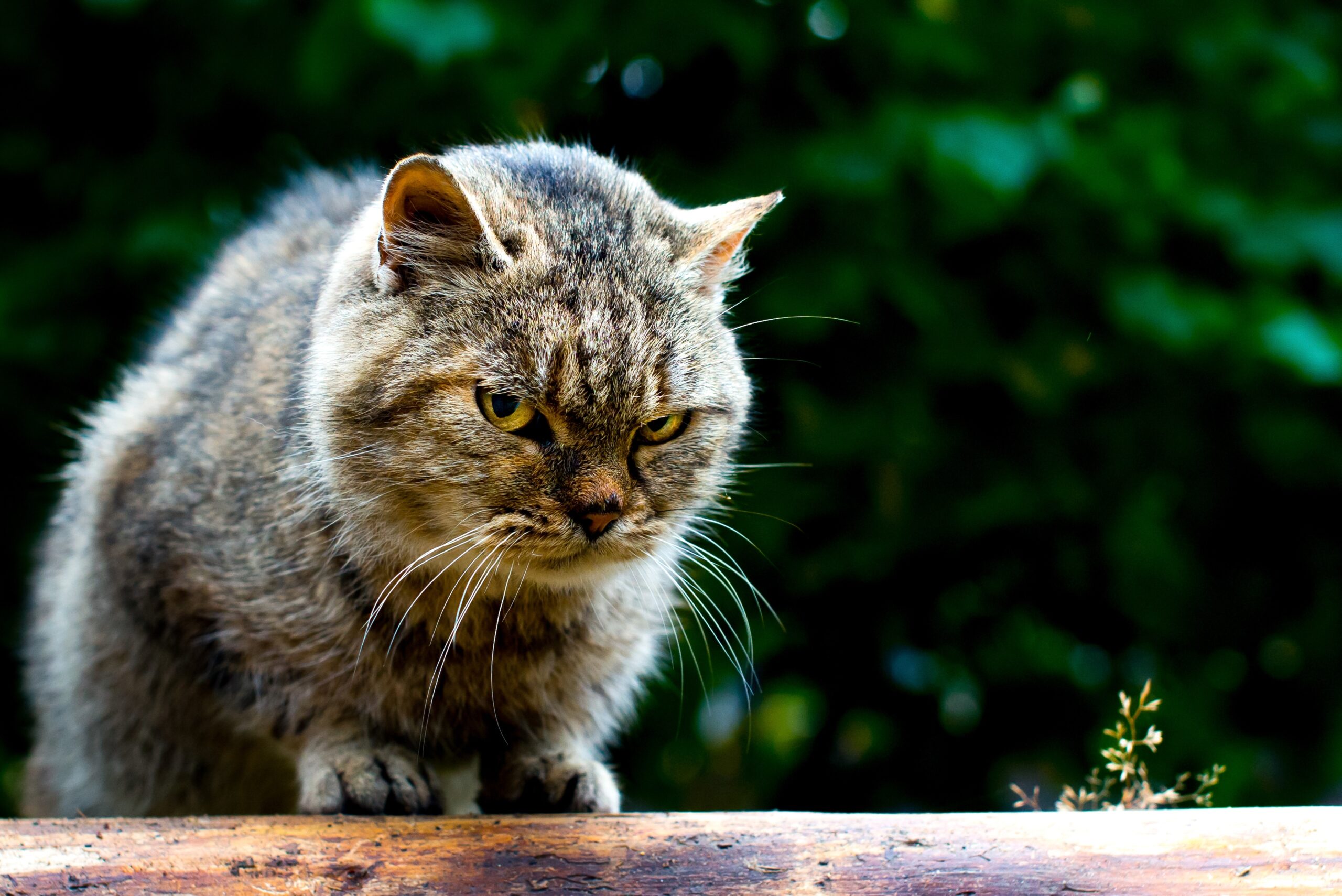- Pumpkin Team
- Dec 12, 2024
- 6 min read
Key points
Cats can see exceptionally well in low-light situations.
Cat night vision is a byproduct of their evolution as hunters.
Compared to humans, cats can see better at dusk and dawn and have a wider field of vision.
Have you ever had to dash to the bathroom in the middle of the night but then collided with a wall? Human eyes, whether you like it or not, have their limits.
But your cat, on the other hand, seems to have no problem owning the night and expertly avoiding obstacles. So, is it true what they say — can cats see in the dark? The short answer is yes — cats have excellent night vision, especially compared to humans. Technically, cats can’t see in complete darkness, but they do see very effectively in low light.
The secrets of your cat’s amazing night vision
In an environment with limited light, cats can see six to eight times better than the average human.
But why? Let us count the ways...
Evolution
Cats inherited their excellent night vision from their ancestors — wild cats like lions and tigers who are nocturnal hunters. As obligate carnivores who must eat meat to stay healthy, cats evolved superior night vision to effectively stalk and ambush prey in low-light conditions.
Aside from a pair of eyes that might as well be night vision goggles, cats also have these predatory characteristics:
Exceptional hearing to detect the slightest movements
Flexible spines and cushioning discs to help them move and pounce quietly
Whiskers to sense movement and judge distance
Eye-design
A cat’s eye is designed specifically to help them see in low-light environments. Their slit pupils, also known as vertical pupils, can even expand to become almost perfectly round in darkness to take in maximum light.
Cats also have large corneas, another trait that makes them highly sensitive to light. Like a wide-angle lens, their corneas capture more light and improve peripheral vision, allowing them to detect even the slightest movement in dim lighting.
Behind their retina, cats have a reflective layer of tissue called the tapetum lucidum that bounces light back through their eyes. This gives photoreceptor cells (rod cells and cones) a second chance to absorb the light, increasing eye sensitivity in low light. It’s also why cat’s eyes seem to glow in the dark.
Ultraviolet vision
Cats can see ultraviolet light, a part of the electromagnetic spectrum that's invisible to humans.
They can see light at wavelengths of well below 400 nm, whereas humans can only perceive light in the 380–700 nm range.
This ability gives cats a secret weapon when hunting because they can see subtle contrasts in their surroundings. They can track prey with urine trails or other markings that are invisible to us. And if a rodent has fur that reflects UV light, it might as well be wearing a neon sign.
Cat vision vs. human vision
You're no match for your cat when it comes to seeing in the dark. While a cat can spot a mouse scurrying across a dimly lit room from a distance, a human would see nothing but shadows.
However, humans do have the upper hand in some visual aspects. Let's look at some of the key differences between cat and human vision:
Perception of color
Both human and cat eyes have color-sensitive cells that make it possible to perceive color. But humans have the edge in this comparison — and it’s not even close.
Humans possess three types of cones, which allow us to see a rainbow of colors. Cats only have two types, so their world appears in muted tones of yellows and blues (this is also how dogs see color). Since color vision isn’t their strong suit, they rely more on movement and contrast to identify objects.

Wider field of vision
Cats have a visual field of 200 degrees — 20 degrees wider than that of humans. This means they can see a much broader range from left to right and straight ahead. Their peripheral vision is like built-in motion detectors, letting them detect movement even at the edges of their visual field.
In contrast, humans have a narrower range of sight. That's why you usually have to turn your head to get a good look at what's happening on either side of you.
Nearsightedness
Cats are naturally nearsighted; they need to be no more than 20 feet away to see an object clearly. Anything further appears blurry to them.
But nearsightedness actually benefits cats in their natural environment. It allows them to zero in on their prey and accurately judge distance before pouncing.
Of course, this also means they have a knack for finding trouble. Take a cat’s-eye view and look for tiny items and cords in your home that are tempting to be batted or chewed on. Kitten-proof your home to keep your nearsighted adventurer safe.
Common issues that affect cats’ eyes
No discussion of cat vision can be complete without a list of common eye problems among felines.
These problems include:
Viral infections
Conjunctivitis
Retinal issues
Squinting
Swollen eyes or tear ducts
Keep an eye out for excessive blinking, discharge, cloudiness, or any changes in your cat's eye appearance or behavior. Certain cat breeds are also prone to specific health issues.
Want to get your cat the best possible care when the unexpected happens? Pumpkin Cat Insurance plans help cover the cost of eligible vet bills in the future, which means cat parents can focus less on cost and more on care.
Are cats nocturnal?
While they may enjoy a spontaneous burst of energy at 3 a.m., cats are not strictly creatures of the night. Instead, they are crepuscular, meaning they are most active at dawn and dusk.
Why dawn and dusk? It comes down to their natural survival instinct. These hours are the perfect time for hunting: there’s enough light for them to see their prey, but it’s still dark enough to stay hidden from larger predators. Plus, their prey, like rodents and birds, are also most active during these times.
To be at their best during these prime hunting times, cats need plenty of rest. Most cats sleep between 12 and 18 hours daily, catching naps throughout the day and night. This extended sleep helps them conserve energy for prime hunting time at dawn or dusk.

Tip: If your cat is a bit too enthusiastic at night, you can regulate their internal clock by having a regular playtime routine before bed and creating a quiet, dim-light environment for sleep. This might help reduce those nighttime zoomies and allow you to finally get that beauty sleep.
Seeing the world through your cat’s eyes
A cat’s ability to see in dark settings is the result of millions of years of evolution for hunting in the shadows. While they might not see as many colors or as far as you can, they're experts at spotting subtle movements and seeing in dim light.
As cat parents, understanding cat vision helps you create an environment where they can truly thrive, day or night. You can then begin to see the world through their eyes and maybe appreciate the thrill of the hunt — even if it's just a feather on a string.
FAQs
Do cats need a light on at night?
No, cats do not need a light on at night because they can see well in low-light settings. In fact, bright lights can disrupt their sleep-wake cycle. Harsh lighting suppresses melatonin production and causes them to be more active at night. If your cat tends to get anxious in complete darkness, consider using a dim nightlight instead.
Why do cats stare at you in the dark?
As a cat parent, you’ve probably woken up in the middle of the night to find a pair of glowing eyes staring at you. While the image might give you a scare, it’s usually something much more innocent. Cats’ eyes glow because of a thin layer of reflective tissue in their eyes called the tapetum lucidum, which helps them see better at night. Cats may stare out of natural curiosity, to monitor their environment, or just out of boredom. Sometimes, they may be trying to tell you how much they love and appreciate you.
What colors do cats see best?
Cats have dichromatic vision, and can only see blues and yellows. They’re less sensitive to red and green hues, which appear as shades of gray to them. But don’t underestimate their vision. Their heightened sensitivity to movement and contrast compensates for their limited color vision.
REFERENCES
https://www.sciencedirect.com/topics/veterinary-science-and-veterinary-medicine/tapetum-lucidum
https://www.catsluvus.com/cat-grooming/infrared-insights-can-cats-see-this-light/
https://www.businessinsider.com/pictures-of-how-cats-see-the-world-2013-10
https://www.weforum.org/agenda/2024/10/children-shortsightedness-myopia-screens-indoors/
https://veterinaryvisioncenter.com/6-common-eye-conditions-in-cats/
https://www.animalhumanesociety.org/resource/cat-keeping-you-awake-how-manage-night-activity
https://cats.com/should-you-leave-on-a-light-for-a-cat-at-night
https://journals.sagepub.com/doi/full/10.1177/1098612X15610369
https://www.thesprucepets.com/why-does-my-cat-stare-at-me-while-i-sleep-5225569

